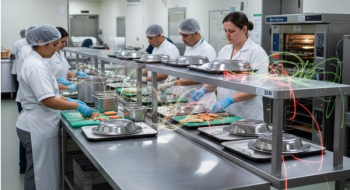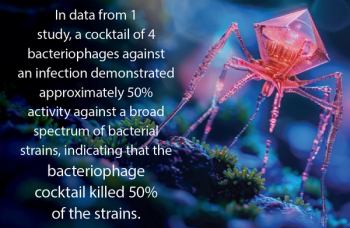
When Carbapenem-resistant Acinetobacter baumannii Comes Calling
CRAB has chameleon-like tendencies that allow it to absorb material from other organisms, and that allows it to ward off most antibiotics. It’s a Superbug.
Carbapenem-resistant Acinetobacter baumannii (CRAB) is not much seen in the United States now, but it has begun to emerge as a deadly pathogen where it does strike, with a 55% mortality rate and an ability to resist most antibiotics thrown its way. Investigators with the Utah Department of Health (UDOH) wanted to study what should be the best response when CRAB emerged at a skilled nursing facility in that state in February 2018. Investigators argue that their findings, published in a pre-print
“Containment in this resource-restrained setting requires an aggressive multi-faceted infection control approach that will address the multiple gaps that have contributed to the outbreak,” the study states. “Resources should be prioritized to enhance basic infection control practices such as: hand hygiene and PPE [personal protective equipment] use; surveillance; environmental cleaning, and communication between providers. An understanding of patient transfer patterns and increased surveillance and reporting of CRAB throughout the United States, and a regional approach focusing on inter-facility connections would improve regional containment efforts.”
A patient identified as Patient 1 was found to have CRAB posthumously. Four other patients at the facility were also afflicted with the disease. An investigation was launched by the UDOH and the US Centers for Disease Control and Prevention (CDC).
“Of the 47 patients screened, OXA-23-producing CRAB were detected in 10 patients (21%), with 7 patients (15%) having been transferred from out-of-state facilities,” the study states. “Of patients who screened positive, 60% did not exhibit any signs or symptoms of active infection by chart review. A total of 38 environmental samples were collected and CRAB was recovered from 37% of those samples. Whole genome sequencing analyses of patient and environmental isolates suggested repeated CRAB introduction into the facility and highlighted the role of shared equipment in transmission.”
Investigators note that CRAB can survive for up to six months in dry environments and that makes them very difficult to kill in healthcare settings. Furthermore, CRAB has chameleon-like tendencies because it can absorb material from other organisms, and that allows it to ward off most antibiotics. It’s a Superbug.
“Acinetobacter baumannii can cause infections in the blood, urinary tract, and lungs (pneumonia), or in wounds in other parts of the body,” says the
Which is what happened at the Utah facility, which investigators found out after collecting sputum, oropharyngeal, wound and skin samples from the groin and axilla. Meanwhile, they also investigated the environment, focusing on high-touch surfaces such as nursing carts, physical therapy equipment, vital signs monitoring equipment, ventilators, bed rails, and respiratory therapy equipment.
“Immediate recommendations included: training and auditing of hand hygiene and PPE [personal protective equipment] use; limiting access to the high-acuity unit; and improved cleaning of high-risk areas and shared patient equipment,” the study states.
Investigators take into account the intrinsic differences between ICUs and vSNFs, writing that “because the patient population in the high-acuity vSNF setting is similar to those seen in ICUs, containment strategies should be modeled after infection control practices in ICU settings, while also balancing patient quality of life and available resources.”
Newsletter
Stay prepared and protected with Infection Control Today's newsletter, delivering essential updates, best practices, and expert insights for infection preventionists.






